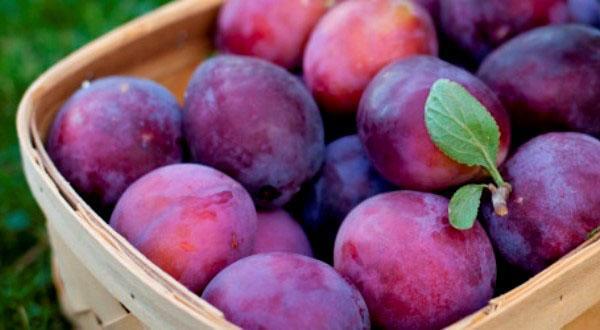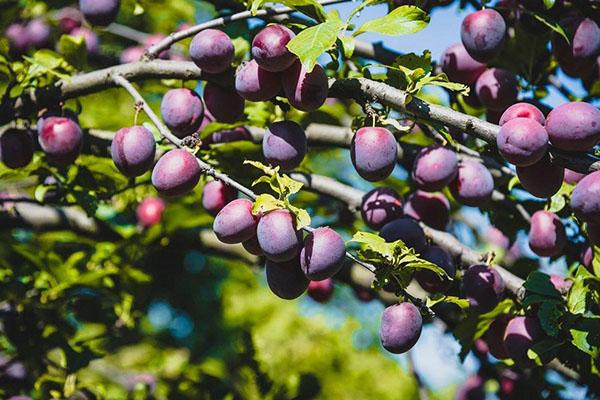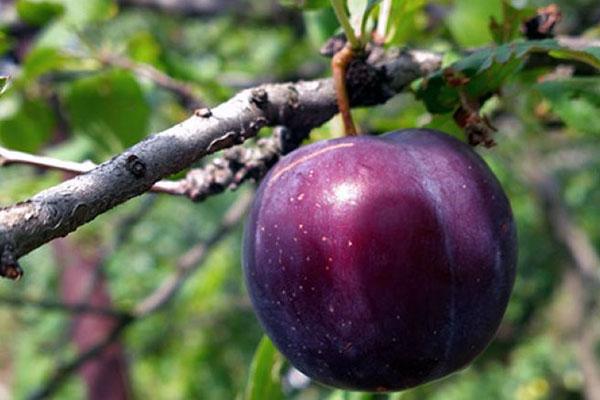Description of Eurasia plum variety for a closer acquaintance
 The modern seedling market offers a wide selection of various varieties. When choosing a fruit tree, experienced gardeners recommend paying attention to indicators such as yield and winter hardiness. A description of the Eurasia plum variety will help you determine these parameters and choose the right tree for your garden or summer cottage.
The modern seedling market offers a wide selection of various varieties. When choosing a fruit tree, experienced gardeners recommend paying attention to indicators such as yield and winter hardiness. A description of the Eurasia plum variety will help you determine these parameters and choose the right tree for your garden or summer cottage.
Brief description of Eurasia plum variety

Variety characteristics

Due to its excellent quality and positive characteristics, the Eurasia plum variety fell in love with most gardeners and summer residents:
- Productivity - a young tree gives up to 20 kg, an adult - about 50 kg. The fruits contain 7% acids and sugar, and 6% dry ingredients.
- Ripening terms - early ripening variety
- Early maturity - the first yield appears already in the 3rd year.
- Pollination is self-fertile, so the tree will need other varieties with a similar flowering period for fruit to appear. Pollinators for Eurasia plum - varieties of such trees as "Mayak", "Golden Fleece", "Volzhskaya krasavitsa", "Skorospelka krasnaya", "Record".
- Frost resistance - the tree is highly resistant to severe frosts and can withstand temperatures down to 25 degrees.
- Disease and drought resistance - plum is resistant to disease and pests, but the tree will need timely treatment with drugs.
The variety does not tolerate drought well - without the necessary watering, the leaves begin to turn yellow, and the fruits crumble and crack.
Despite the high yield, strong immunity and early maturity, this variety has a number of disadvantages: the size of the tree, the need for pollinators, ripe fruits quickly fall off, low dense pulp and poor transportation. Also, for some, frequent adjustments and pruning of branches is a difficulty.
Planting and caring for Eurasia plum
 Planting a seedling of Eurasia is carried out in mid-spring or early autumn before the first frost. Plum, like other stone fruits, loves sunny and elevated areas. Given a number of features, the variety requires a place protected from strong winds.
Planting a seedling of Eurasia is carried out in mid-spring or early autumn before the first frost. Plum, like other stone fruits, loves sunny and elevated areas. Given a number of features, the variety requires a place protected from strong winds.
Plum grows well on loamy soil with neutral acidity.

Eurasia landing pattern:
- The landing site is prepared in advance - a planting pit is made 90 cm deep and 80 cm in diameter. If the soil is excessively acidic, it is deoxidized with lime. When planting in the fall, humus, sulfate and superphosphate... If the plums are planted in the spring, add manure, ash and urea.
- A support for a tree is installed in the center of the pit.
- After making sure that there are no dry or rotten shoots, the seedling is placed in the soil, carefully distributing the root system.
- Further, the root collar is left 3 cm above the soil level - this is necessary for sap flow.
- Freely tie the tree to the support post.
Immediately after planting, the Eurasia plum variety needs to be poured with 20 liters of liquid. Then spend soil mulching - peat or humus is used for this purpose. At the end, the tree should be cut at a height of 60 cm from the ground, and the leaves should be removed so that all the useful components go directly to the root system.
Further care of the drain consists in carrying out such events:
- Watering - for an adult tree, watering 60 liters of water once a week is required, for a young tree - 40 liters once every 10 days.
- Top dressing - ammonium nitrate is added before flowering; during the flowering period, a mixture of potassium sulfate and carbamide is required. In spring and summer, Nitrofoski solution is introduced and fertilized with superphosphate in autumn.
- Formative pruning is done annually. First, excess shoots are removed, which thickens the crown, and then last year's growths are cut off.
Also, preparation for winter is no less important - first, dead bark and lichens are removed, and then the trunk is covered with whitewash.
Diseases and pests
 The Eurasia plum variety needs treatment from harmful insects and protection from diseases. To prevent attacks plum aphid during flowering, the tree is treated with a carbamide solution. Also, after flowering, the plum must be sprayed with Bordeaux liquid. To protect against fruit rot, Fitosporin is used, and Karbofos is used to eliminate the plum sawfly. As a preventive measure, in the fall, the trunk circle is digged, and the fallen leaves are removed in time.
The Eurasia plum variety needs treatment from harmful insects and protection from diseases. To prevent attacks plum aphid during flowering, the tree is treated with a carbamide solution. Also, after flowering, the plum must be sprayed with Bordeaux liquid. To protect against fruit rot, Fitosporin is used, and Karbofos is used to eliminate the plum sawfly. As a preventive measure, in the fall, the trunk circle is digged, and the fallen leaves are removed in time.